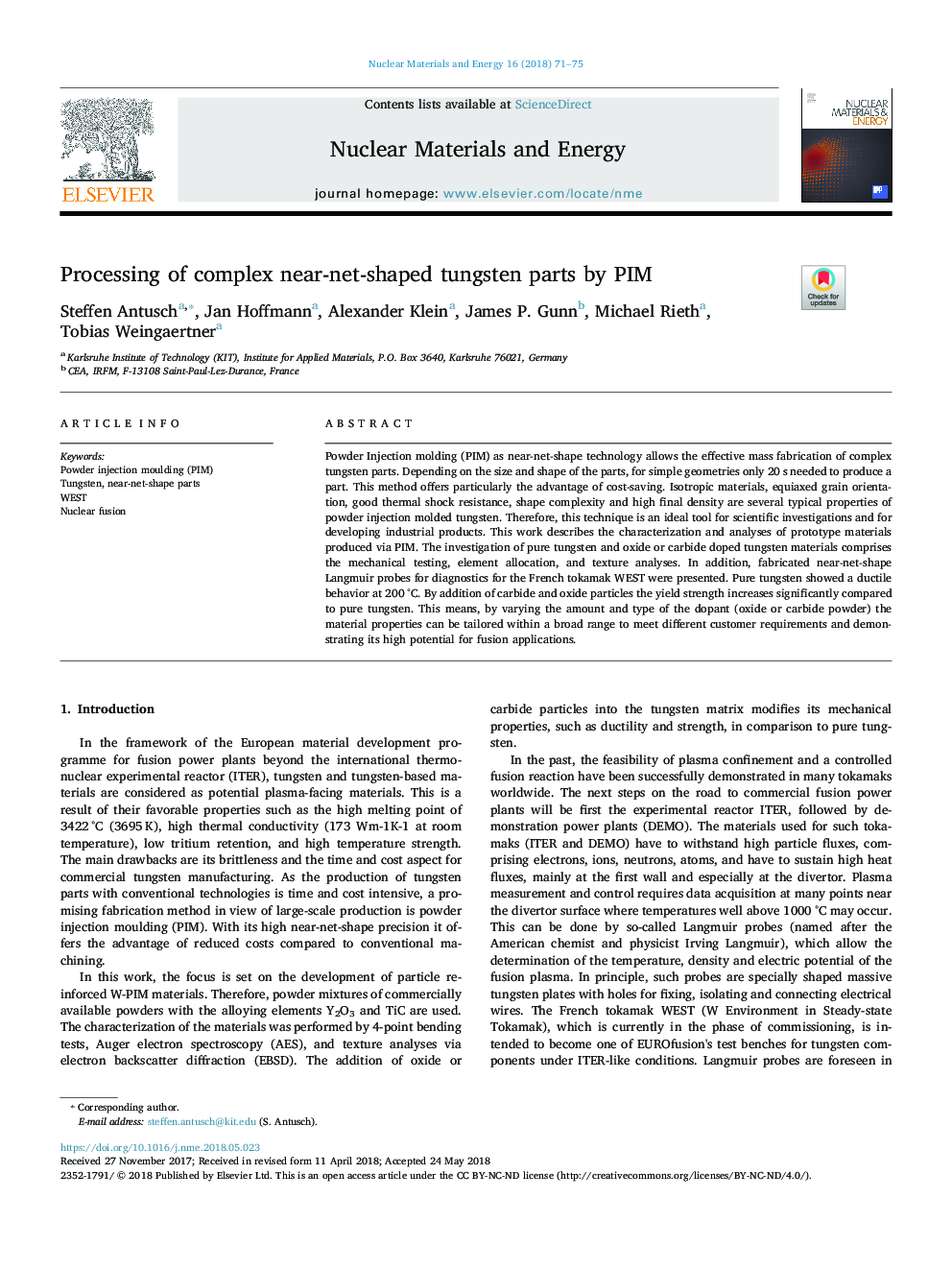| Article ID | Journal | Published Year | Pages | File Type |
|---|---|---|---|---|
| 7987215 | Nuclear Materials and Energy | 2018 | 5 Pages |
Abstract
Powder Injection molding (PIM) as near-net-shape technology allows the effective mass fabrication of complex tungsten parts. Depending on the size and shape of the parts, for simple geometries only 20 s needed to produce a part. This method offers particularly the advantage of cost-saving. Isotropic materials, equiaxed grain orientation, good thermal shock resistance, shape complexity and high final density are several typical properties of powder injection molded tungsten. Therefore, this technique is an ideal tool for scientific investigations and for developing industrial products. This work describes the characterization and analyses of prototype materials produced via PIM. The investigation of pure tungsten and oxide or carbide doped tungsten materials comprises the mechanical testing, element allocation, and texture analyses. In addition, fabricated near-net-shape Langmuir probes for diagnostics for the French tokamak WEST were presented. Pure tungsten showed a ductile behavior at 200â¯Â°C. By addition of carbide and oxide particles the yield strength increases significantly compared to pure tungsten. This means, by varying the amount and type of the dopant (oxide or carbide powder) the material properties can be tailored within a broad range to meet different customer requirements and demonstrating its high potential for fusion applications.
Keywords
Related Topics
Physical Sciences and Engineering
Energy
Nuclear Energy and Engineering
Authors
Steffen Antusch, Jan Hoffmann, Alexander Klein, James P. Gunn, Michael Rieth, Tobias Weingaertner,
